The Nomad and his box of sounds. Or nostalgie towards the omitted past.
One of the streets in the South-Western district (which is named «Bangladesh» by Yerevan dwellers ) was flooded by strange sounds. Sounds were flowing between the cosy old buildings, tactlessly glued to each other and the post soviet traces of the recent ideological failures. What was the sound? Not an exact music, not a sound of moaning or else. Anyway, the strange sound was so unusual that it made some inhabitants of the buildings get out of their houses and see what was going on. Even the sharp and cold november weather didn`t stop them. So, where was the noise coming from? «Noisemakers». There were three of them the armenian composer and sound artist Vardan Harutyunyan, the musician Michael Voskanyan and the french musician and cultural actor Alexis Paul. The reason of the «noise» was one of them. The last one. Alexis Paul is a french musician who works in different genres. He is the founder and the member of several bands – Bye Horus, Belle Arché Lou, Dianthus. He has also founded the independent record labels Humanist records, Armures Provisores , and organised an independent music festival Humanist records in Paris . He spent the whole previous 2016 year far from his homeland. He traveled through 10 countries to revive a rare instrument which was about to vanish. His visit to Armenia ended up with several projects, which included collaborations with local musicians and artists, among them Leo-Leo, Vardan Harutyunyan, Michael Voskanyan, Loussine Ghoukasyan, e.t.c. That is how Paul worked during all his visits – he collaborated with locals, worked with different spaces and tried to filter the vibes of the country into a specific collective work, which later might have become the result of his poetic wanderings.
What is the Street Organ?
The barrel organ is a mobile wind instrument that uses perforated rolls to produce sound. While combining the technical aspects of liturgical organ music, watchmaking and mechanics, the barrel organ first appeared in the 18th century and was played in the streets by peddlers, beggars or foreigners. Not only does it embody togetherness-turned popular culture, but also music for the masses. In the frames of this project the instrument was represented not only as a vanishing relict, but also as a catalisator of social interactions. In each of the visited countries the musician collaborated with local artists, musicians, documentalists in order to create a collaborative works- performances, exhibitions, e.t.c. These all helped to bring organ to life by using it as a platform for communication.
Saudaa Group in Chillie
The musician left his daily routine and the comfort behind taking only 2 things which accompanied him during the whole journey- the forgotten legacy of past- the street organ and his melancholia.
The prisoner of the black Bile in a role of emancipated nomad
My only star is dead,- and my constellated lute
Bears the black Sun of Melancholia
Gerard de Nerval, El Desdichado
Alexis Paul got inflected with melancholia long time ago, after reading a poem by proto symbolist Gerard de Nevral «El Desdichado». In his words it opened a new world to him and gave a clear idea of how his further life should be. El Desdechado can be translated as “disinherited”. The project reviving an old street organ is named Street Organ Ritornellos.
Street Organ Ritornellos is the name of the project that belongs to the artistic Saudaá Group. Saudaa-is a transliteration of Arabic wordwhich means “black”. Probably, its stem goes back to Portuguese “saudade”, which can be described as «happy melancholia». «I can describe this as an anticipated melancholie, in other words- a happy melancholie» (Alexis Paul, Saudaá Group). Paul himself tells, that this name is the precise description and combination of all his interests and things, that mark his view on life, music, art and human relations.
This name also implies the feeling of emptiness, melancholia and the specific loneliness as a form of real communication with people- the distance that allows one to love truly, without any borders.
Paul usually likes to connect everything- his art, personal anguishes, memories and impersonal problems together. So a careful look can help to understand the project and see it under different angles.
The art of the personal or Melancholia as an opportunity for transformation
“I choose to be melancholic and I want to continue to live my life that way ”
A.Paul, Saudaá Group
Melancholia is the most used word, when it comes to Alexis Paul. He often uses it both describing his life and art. Melancholia is a feeling of loss. It`s the primary description, even the freudean version brings to this point. Loss. The irretrievable loss of the Object, which most of people consider to be destructive, but in this article it is viewed as the base, the fuel for construction. But we can remove melancholia from the freudean context of sadness and devastation, leave mr. Freaud smoking his cigar in the balcony and look back to the greek philosophy. In that case we could just see nothing but a bile- simple black bile. The greek philosopher and music theorist Theofrastos belived that black bile was similar to usual biles. Bile stays the same in all cases. It is just a mix of different things in different amounts. But the black bile has also something else. It has the elements of all types. It is the result of the deflagration of all biles. It is the leftover, the remain of their past activity. As a leftover it is able to transform into any type, whenever it needs to. From this point of view we can conclude, that the melancholic as a the black bile carrier is also able to transform in some context, and imitate other characters.
Melancholia works like an open wound- it gathers all energy and devastates the «I» until its total destruction, burning itself away. From that point the melancholic becomes somebody else- anybody else. By establishing himself as a melancholic Paul from Saudaá Group points out two things
- the importance of his personality and his character for this project
- the importance of a “masquerade” factor, of becoming a typical organ player
«The organ «eats» the musician. The musician, his ego disappears…» this is how Paul describes the relations between the organ and the musician. As a musician who tries to approach an instrument which practically doesn`t need him, Paul needs to destroy himself. Destroy first as a musician, step out of the institutional form of being a musician, an artist. Probably it is one of the reasons that made him wander for an entire year – bearing an image of a lonesome nomad and waving around the black flag of his melancholia.
“It is a very poor music,” wrote Charles Loring Brace, the founder of Children’s Aid Society in a sympathetic 1853 New York Times article about the “colony of Italians” living in Five Points at the time, “but it is the only music some of our neighbors can ever afford to hear.”
The literature often represented the organ players as people from lower classes, the unprotected sometimes with ill repute. So the instrument, which was marginal and hadn’t been ever considered to be “ART” also had marginal players. This also was the reason of public denial obsessed by thoughts of «high ART», or, later, «professional art». Another reason of being hated was the ability of the organ to repeat music, cut it and take it out of its context- to the primary space of its existence. One more reason was that those who were responsible for “stealing art from its place” were non musicians, non artist…simple marginals. Isn`t it an enough reason to hate the organ if you belive that art is only for the selected ones?
In his “Poetica”Aristotel tells
October 29, 2016 that imitation, or replication is the root of every knowledge. People feel the need of replication, and the most specific people, the melancholics, are more apt to it. Melancholic writers, such as Montaigne and Rousseau often address to the problems of replication of image and “devastated mask” . The “devastated mask” hides nothing. Emptiness. Just Loss. And Loss, the topic of “paradise lost” is one of the core motives, bases of melancholia.
«To introduce me in few words I would simply quote Filliou:
“Art is what makes life more interesting than art”
More details :
I was born in 1987 in Les Sables D’Olonne, Western France, Atlantic ocean. I grew up near the Alps, (french suburbs of Geneva) and used to live in Paris last 6 years...» (A. P.)
In his introduction letter Paul mentioned two important things- his birthplace and the quote from his favorite artist. The Le Sable d`Olonne was founded in 1218 by the french by Savary I de Mauléon, the Lord of Mauléon, Sénéchal of Poitou and prince of Talmont and also troubadour . From this view, transformation of Paul the cultural actor, the coordinator of art projects and the musician into a romantic nomad becomes something very personal. It leads to a thought, that his nature of a nomad doesn`t come to show only a typical musician of organ, but also to create a communication with his personal past. It is a unique dialogue between Paul and his roots, a hidden secret message from his past to his future. The other important point was the quotation by an artist and action poet Robert Fillou, who belonged to Fluxus- an international art movement of 50-es (lat. “to flow”)
“Art is what makes life more interesting than art”
The quotation itself is quite interesting because it divides life and art, putting art in some other place- better, than life. It pulls art out of the context of everyday life, making it something spectacular and colorful.
«…makes life more interesting»
This part shows clearly the lack of interest towards life itself, the belief that life can be interesting only with a help of something else. This thought continues by offering to fill life with art. From the melancholic point “emptiness” is a good reason to create an entertainment, an action or a feeling that will be able to fulfill life.
If we think of it as the basic point- that life is empty, then all we can do is to find something to “fulfill it”. This is also what “entertainment” industry tends to offer. It also tends to fill the blank spaces… To give an adventure or a love story to the one, who never had it, but in a specific place and in a specific time. Fill the time of the viewer and his day with imitation of emotions and the feeling of empathy. Of course the project and the “entertainment industry” have nothing in common, except the belief that life is void and needs to be filled. It is not accidental that a professional musician chose a “non professional instrument” for his project and for his traveling (or maybe the instrument chose the musician?). The instrument, which always was considered “marginal” and “entertaining”. The last one was always opposed to the “ high ART”. This is an experiment to bring art into everyday life with the help of “not art” and make “life more interesting than art”. “Not art” is free from clichés, and more human friendly. That is why it has more chances to penetrate into people`s life and fill it with colors that supposedly (for the black bile man) life doesn`t have. If the street organ were a person, he would certainly be a taxi driver, who talks deep things, maybe about Deleuze and his “proletarian” language paired with the “traveling ” essence of his work would help him gain more attention and followers. This project also had an approach close to it. To talk clear, even primitive sometimes and to travel. The project tends to stay as simple as possible in order to gain more empathy. As the musician often liked to note, “love creates the bridge but not the knowledge”, which shows that his ideas lean more on simple, emotional things, rather than strict conceptual structure the modern art is flooded with.
The instrument of marginals and the Hight Art
When the question comes to preservation, the culture prefers only estimated values- the “high”
Jean Claude Carriere, Umberto Eco,
This is not the End of the Book
Strange idea- to remind people of a forgotten box, which gathers sounds. A box. You`d never describe a musical instrument like that or something, that is considered to be “ART” or something, that has a “value”. Street organ was always marginal and could continue to be like that even if it would be carved from the ribs of Jesus by Stradivarius himself (pardon my french). If the question would come to preservation of the organ…well, let us say, no one would care. It was always something else- not art…something that belonged to streets. The reason of its “marginality” was its ill repute of a “non musical instrument”, a “non art”, which was played by marginals, “non artists”. A “non” creates a wide space to exclude the “ART” and its institutional power. The street organ gives everyone an opportunity to «make music», to spin it and that is the way it removes the distance between a person and the “ART”. It makes “ART” something more accessible and achievable. The importance of the organ was the annulment of borders between art and life. It basically took the art out to streets. Of course, this revolutionary cocnept had a flaw- the musicians, who had bad «reputation». Their marginality was playing a big role in organ`s destiny and preservation. People who played street organ were mainly emigrants, alcoholics, “non musicians” and outcasts. On the other hand, the instrument itself was considered not musical, so it could be played by anyone. So it allowed anyone to repeat art, transfer art from its original, sacral space. By removing art from sacral spaces, and its «here and now» or the aura it becomes possible to deconstruct it, monkey it and, which is the worst,to disinherit art and rid from sacral adoration towards it. Not being an “ART” bothers to be recognized and preserved in the pages of history . In Europe, cinema was acknowledged “art” only during 20-30-ies and thus only deserved to enjoy the perks of being preserved. These are the flaws, that the artist Paul tries to fill. He doesn`t try to bring the organ to life as a musical instrument only, he tries to preserve the proletarian, the «marginality» from vanishing. On the other hand, he uses his personal reputation as a musician and collabrates with professional artists, as a tool to «wash» the bad reputation off the organ, trying to legitimate its existence and its right to be called “musical”.
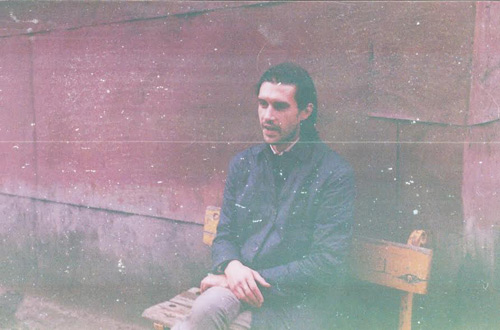
I will do my best, because it is the blood of proletarians that flows in me. That is my greatest pride. So, as a poor virtuoso, who plays a machine- trembling and sometimes out of tune, perhaps I am a bit cheesy, who knows??[1]
This is Paul`s note in the official blog of Street Organ Ritornellos project. He accentuates the «proud to be proletarian» sentence, which can be understood as personal message, but more as a performative bold message of the “disheritaged” (el desdichado), the “marginal” addressed to the world of “high ART”. The message is bold, and strong because it uses the tools of “hight art” and is told from the space, where the “ART” works, exists.
This is a effort towards saving the “low” the “marginal” and entertaining in a environment, which still suffers from fake divisions between «hight art», «entertaining art», between «professional» and «not professional».
“I don`t believe in professional arts. What do you mean by saying professional artist? There is some kind of obsession in my country to become a professional. But it is not necessary to be professional in order to create something influential and beautiful. Art, music and all things in life do not always need to have a reason or meaning to exist. They just either exist or not. If you want to be a professional artist, it means you need to make steps to it. That is a choice too, but in my case being professional would change nothing for me» (A.P.)
The Nostalgie for Loss
Nostalgie is usually described as yearning towards the past and the deriving negative appreciation of the present. «From this point of view nosalgie is opposite to progress. It is a criticism of progress. The Nostalgic exaggerates all mistakes and sins of progress from the flow in order to verify that no change is good. Nostalgie is like an ethical barrier of progress, it often criticizes progress from the ethical point as Rousseau once did “ [2] . As a project, which uses past, Street Organ Ritornellos is quite daring. It works with a pretty difficult material- the past and the nostalgie. One wrong move, and the whole concept of connecting the past and the present, bringing the street organ back, collaborating with foreign artists will come to a fiasco. It is a large-scale project, which tries not only to reconstruct the memory of the street organ, but also to legitimate its existence as a musical instrument. To make it real and to give something that the organ had lost for so many years- its place in the archives, appreciation as an art instrument and as a result- the gift of being preserved. The Organ is an instrument of the past, forgotten and left behind. Even when using in present it doesn`t let the present penetrate inside it, reversibly, it penetrates into present without even loosing it`s form. In the frames of this project it becomes a past in the present. Paul fills the absence of the organ from archives with the documental references. His documental photo reflections- from the view of a “foreigner”, the “one who penetrates” and the references of local artists from around the world – the “locals”, “the insiders”. When representing himself as a “nomad”, a “marginal” musician with a hole in his sweater, artist Paul doesn`t only play for your interest, make you get more attracted to the organ, or even to use attention in order to fill the archives with documents…but also to question the Disappearance itself. Does the disappearance mean death? Is it absolute? The project leads to a thought, that disappearance is not the end. When something disappears it doesn`t stop its existence. Disappearing is not necessarily death, it is not a form of death. Sometimes it is connected to loss- loss in archive, loss from the sight. When a person, or an object disappears from the “all seeing eye” of the archive and pages of filtered history, it doesn`t stop its real existence. It just vanishes for different reasons- waiting for a better time or context to reappear again.
The nostalgie for Future
Future is not a profession. If future can be predicted, then it is not a future. Future has an amazing ability of constantly surprising us.
Jean Claude Carriere, Umberto Eco,
This is not the End of the Book
Street organ Ritornellos mixes up the present and the past and the future- removing the distance and borders between them, representing death not as an absolute form of disappearance, but as a string of melancholic transformations, a play, unique hide-and- seek with the attention of history and archives. The project puts nostalgia in a place, where it doesn`t become a bothering aspect for adequate valuation of present and of progress. At the same time, it doesn`t push the past too far – wrapping it with sacral layer of inactivity. And what about the future? The project takes it`s borders, removing the foggy fear against it and the aspect of expectancy. The project removes all the borders, leaving only one time- Now. The Now, which at the same time is highly archivated, because archivation is the best way of creating distance between Now and The Object. The eager to preserve the image of The Object suggests, that there is a masochistic desire to loose The Object or a fear of loosing it. It all takes us back to the black melancholic hunger of loosing and using the pain of loss as a fuel.
What does it mean to archivate the Now? It means simply to put the present moment into the past. But in a new form of past. A past which is always present. (Mark Nichanean “Fourth flange of the archive”)
The Saudaa group visit to Armenia
You may find more information about the project in the official web-site streetorganritornellos.com
[1] « Je ferai de mon mieux, car c’est le sang des prolétaires qui coulent dans mes veines et tant mieux. C’est ma plus grande fierté. Alors, comme « un pauvre virtuose du pavé » jouant d’une machine tremblante et parfois désaccordée, suis-je peut-être un peu ringard, qui sait ?”,
BANGLADESH YEKEGHETS’I, October 29, 2016 http://streetorganritornellos.com
[2] “Progressive Nostalgie?” Alexander Ivanov, Moscow Art Magazine, June, 2007





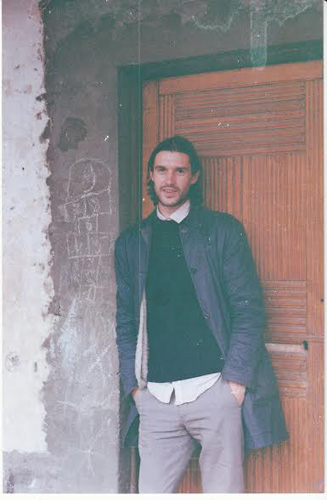
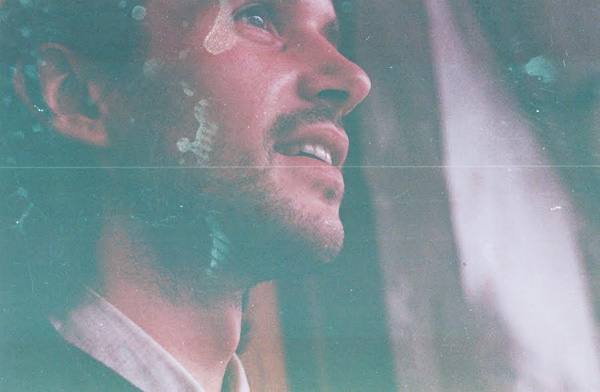
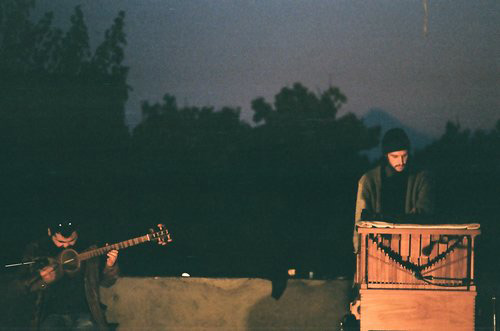
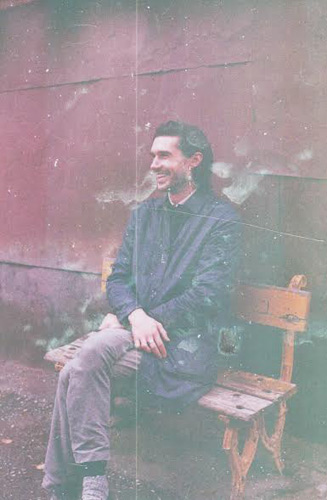
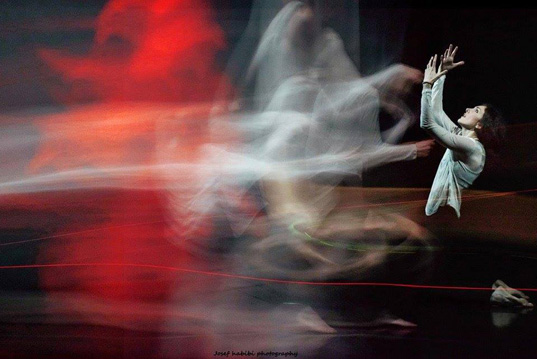
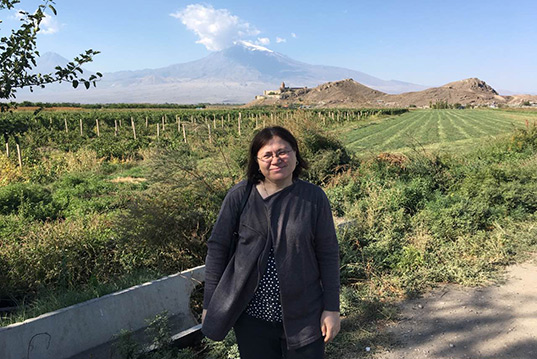

Leave a Reply